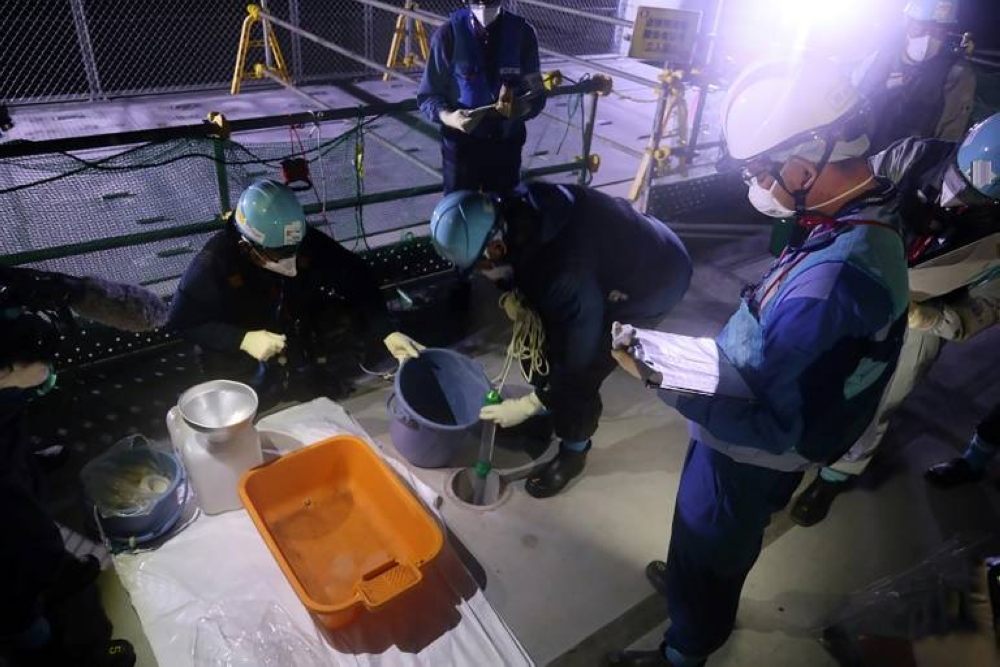Final preparations to discharge wastewater from the crippled Fukushima power plant in Japan were under way Wednesday, its operator said, a day before the scheduled release into the Pacific Ocean.
Tokyo had announced on Tuesday that the operation would begin on Thursday, prompting an angry response from China and partial import bans on Japanese seafood by Hong Kong and Macau.
The operator of the plant, TEPCO, said that it diluted late Tuesday a cubic metre of the wastewater with around 1,200 cubic metres of seawater and allowed it to flow into position in a pipe.
This water will be tested and then from Thursday released into the Pacific Ocean together with more water stored at the site that will be transferred and diluted, TEPCO said in a statement.
Media reports said the operation would begin around 1:00 pm (0400 GMT), while the operator declined to confirm the reports.
The Fukushima-Daiichi nuclear power station was knocked out by a massive earthquake and tsunami that killed around 18,000 people in March 2011, sending three of its reactors into meltdown.
TEPCO has since collected 1.34 million cubic metres of water -- almost 540 Olympic swimming pools' worth -- used to cool what remains of the still highly radioactive reactors, mixed with groundwater and rain.
A special system has filtered out all radioactive nuclides except for tritium, levels of which will be well below that released by nuclear power plants in their normal operations -- including in China, TEPCO says.
The release has been endorsed by the UN's nuclear watchdog -- the International Atomic Energy Agency (IAEA) -- which said it will have staff on site on Thursday.
With around 1,000 steel containers holding the water at the site, TEPCO says that it needs to clear space for the next stage of the lengthy, expensive and risky decommissioning of the plant.
That is the removal of molten nuclear fuel and radioactive rubble from the wrecked reactors, an operation so dangerous that TEPCO will need to use robots and not humans.
The plant operator will carry out four releases of treated water from Thursday until March 2024, with 7,800 cubic metres of water released each time, its documents showed.
The first discharge will take about 17 days. About 5 trillion becquerels of tritium will be released this fiscal year, TEPCO added.
- 'Sewer' -
China has accused Japan of treating the ocean like a "sewer", banning imports of food from 10 of Japan's 47 prefectures even before the water release and imposing strict radiation checks.
Beijing on Tuesday summoned Japan's ambassador "to make solemn representations", while Hong Kong and Macau, both Chinese territories, banned the import of "aquatic products" from the same 10 regions.
Analysts said that while China may have genuine safety concerns, its strong reaction is also at least in part motivated by its economic rivalry and frosty relations with Japan.
The South Korean government, which is seeking to improve ties with Japan, has not objected although many ordinary people are worried and have staged protests.
Social media posts in China and South Korea have included false claims about the release including doctored images of deformed fish with claims they were linked to Fukushima.
Japan has sought to counter online misinformation as well as win over sceptics at home and abroad, with everything from study tours of Fukushima to livestreams of fish living in the wastewater.
This outreach, backed by the IAEA, has spread to Pacific islands, where Western nations conducted nuclear weapons tests in the 20th century.
Fiji's Prime Minister Sitiveni Rabuka and Mark Brown, premier of the Cook Islands -- which IAEA chief Rafael Grossi visited in July -- on Tuesday voiced their support for the agency's findings.
"This is not a decision taken lightly, as I will never support unsafe and dangerous nuclear dumping," Brown said in a statement on Wednesday.
"I believe that the discharge meets international safety standards."

